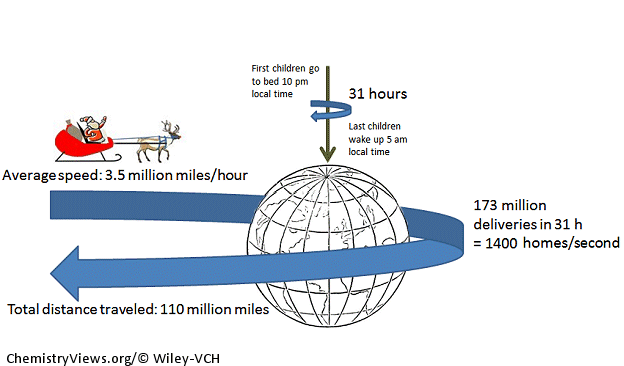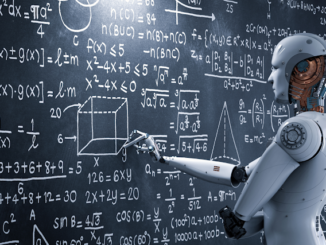
It's a sad fact but there are people in this world who don't believe in Father Christmas.
I know. I feel sorry for them, too. Imagine a life robbed of the excitement of knowing Santa's coming down the chimney on Christmas Eve to deliver loads of presents. Imagine not leaving out a sherry, mince pie and carrot for rudolph and finding them gone on christmas morning. Imagine a life starved of being able to visit Santa's Grotto and meet the living, breathing Ho-Ho-Ho-ing JOY that is Father Christmas.
Some of these sad people may just miserable killjoys who get their kicks out of trying to ruin Christmas for the rest of us. Some might have evil older brothers and / or sisters who ruined their childhoods so they're taking their revenge on us. But there also exists a mystifying breed of so-called intellectuals who go to extraordinary lengths to discredit the noble gentleman, resorting to mathematics to prove their case.
Scientists have actually been wrestling with the feasibility of Santa's job description since the 1850s. A recent in-depth study of the logistical task facing him on December 24th looked at the challenge of delivering 1kg of presents – that's the equivalent of an average Lego box – to the world's 2.1 billion children in one night.
Their calculations ran like this …
Assuming a global average of 2.5 children per house, Santa must make 842 million stops on Christmas Eve to fill his orders.
By allowing an average quarter of a mile between each house, science suggests that he must travel 218 million miles with about a thousandth of a second to squeeze down each chimney, fill-up a stocking, eat a mince pie, swig a glass of sherry and get his sleigh airborne again.
To achieve this he must travel at 1,280 miles per second.
The good news is that, by traveling East to West, Santa can potentially extend Christmas Eve to 31-hours. Moreover, Einstein's theory of relativity dictates that the faster an object travels, the slower times appears to pass. So, at the speed Santa and his reindeer are traveling, .0001 of a second is possibly achievable at a leisurely pace.
But science is still against him.
To have enough presents, Santa's sleigh must carry 400,000 tons of gifts.
With the average non-jet-propelled reindeer capable of pulling only 150kg, Santa would apparently need 360,000 reindeer to heave his sleigh skyward.
This huge cavalcade would have a total mass of about 500,000 tons which, at the required speed scientists suggest, would cause each reindeer to vaporize in a sonic boom flattening every tree and building within 30 miles.
In addition to this, Father Christmas would have a mass of 2 million kilograms, causing him to combust when his reindeer came to a sudden halt.
Oh dear.
So, if we are to believe science and science alone, then there can be no Santa Claus. There can be no Christmas Eve deliveries. There are no flying reindeer. No sleigh. No chimney action.
It's all a bit bah humbug.
The thing is Science has omitted to take into account the magic and mystery of the Great Man. The simple fact is that no-one knows how Santa does it. If we did, then every miserable, greedy, non-believing scientist (and courier company) would be after a piece of him. But they're not. And that's because they just don't get it.
The thing is, Santa's sleigh is not a time machine, a futuristic flying machine or a Tardis … it is a tangible ray of hope powered by our imagination and the dreams of children all over the world.
And that's how, every year, Father Christmas brings magic to all of us.
Proudly WWW.PONIREVO.COM



